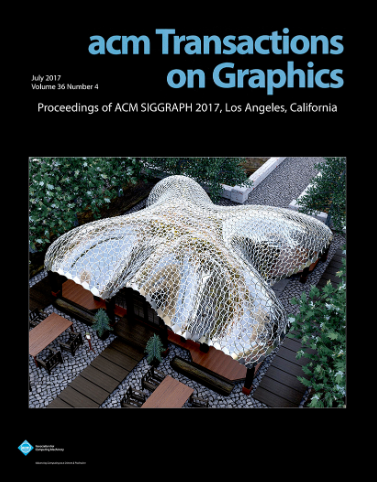快速双向以人为中心的视觉交流的光码
IF 7.8
1区 计算机科学
Q1 COMPUTER SCIENCE, SOFTWARE ENGINEERING
引用次数: 0
摘要
像QR码这样的视觉代码被广泛用于向用户传递信息的一些应用中。然而,基于空间代码的用户交互(例如,在电话屏幕上显示代码以交换联系信息)通常是乏味的,耗时的,并且容易由于图像损坏(如噪声,模糊,饱和度和视角扭曲)而产生错误。我们提出光码,一种在用户之间快速、流畅地交换信息的新方法。光码基于使用紧凑和低成本的收发器设备发送和接收时间码(而不是空间码)。由此产生的方法在用户之间以最小的体力和认知努力实现无缝和近乎即时的短消息交换。我们设计了新颖的编码技术、硬件原型和应用程序,针对以人为中心的通信进行了优化,并在各种具有挑战性的条件下(包括一系列距离、运动和环境照明)促进了快速、流畅的用户对用户交互。我们通过定量分析以及基于用户研究的几种现有方法(包括显示器-摄像机链路,蓝牙和NFC)的比较来评估所提出方法的性能,这些方法在各种实际应用场景中显示出对光码的强烈偏好。本文章由计算机程序翻译,如有差异,请以英文原文为准。
Light Codes for Fast Two-Way Human-Centric Visual Communication
Visual codes such as QR codes are widely used in several applications for conveying information to users. However, user interactions based on spatial codes (e.g., displaying codes on phone screens for exchanging contact information) are often tedious, time consuming, and prone to errors due to image corruptions such as noise, blur, saturation and perspective distortions. We propose Light Codes, a novel method for fast and fluid exchange of information among users. Light Codes are based on transmitting and receiving temporal codes (instead of spatial) using compact and low-cost transceiver devices. The resulting approach enables seamless and near instantaneous exchange of short messages among users with minimal physical and cognitive effort. We design novel coding techniques, hardware prototypes and applications that are optimized for human-centric communication, and facilitate fast and fluid user-to-user interactions in various challenging conditions, including a range of distances, motion and ambient illumination. We evaluate the performance of the proposed methods both via quantitative analysis, as well as user-study-based comparisons with several existing approaches including display-camera links, Bluetooth and NFC, which show strong preference toward Light Codes in various real-world application scenarios.
求助全文
通过发布文献求助,成功后即可免费获取论文全文。
去求助
来源期刊

ACM Transactions on Graphics
工程技术-计算机:软件工程
CiteScore
14.30
自引率
25.80%
发文量
193
审稿时长
12 months
期刊介绍:
ACM Transactions on Graphics (TOG) is a peer-reviewed scientific journal that aims to disseminate the latest findings of note in the field of computer graphics. It has been published since 1982 by the Association for Computing Machinery. Starting in 2003, all papers accepted for presentation at the annual SIGGRAPH conference are printed in a special summer issue of the journal.
 求助内容:
求助内容: 应助结果提醒方式:
应助结果提醒方式:


